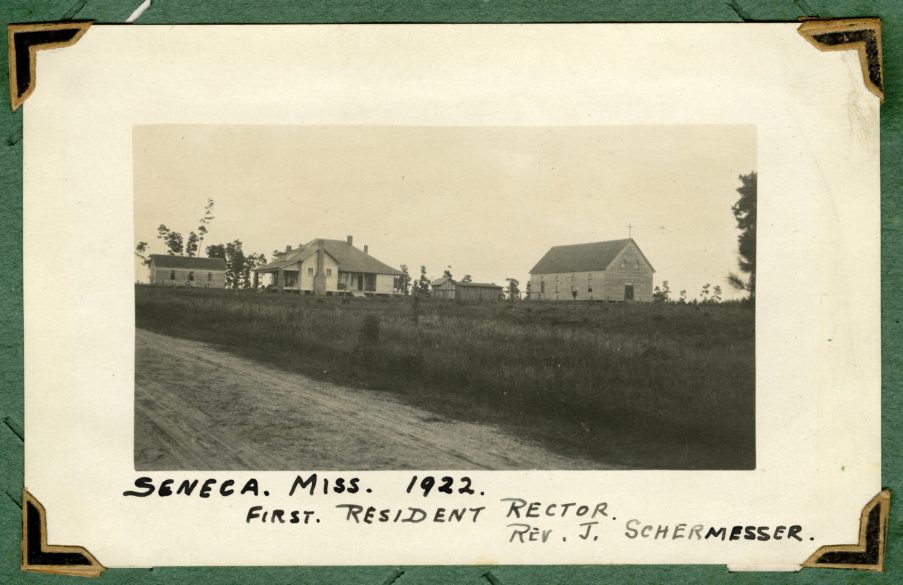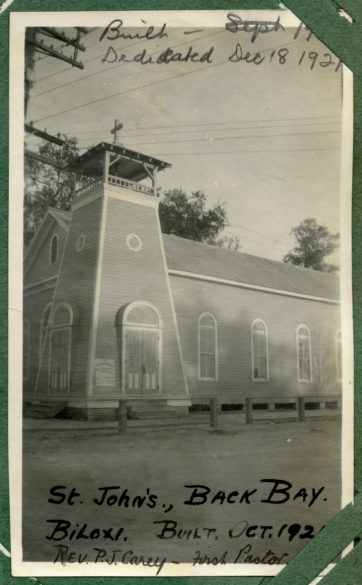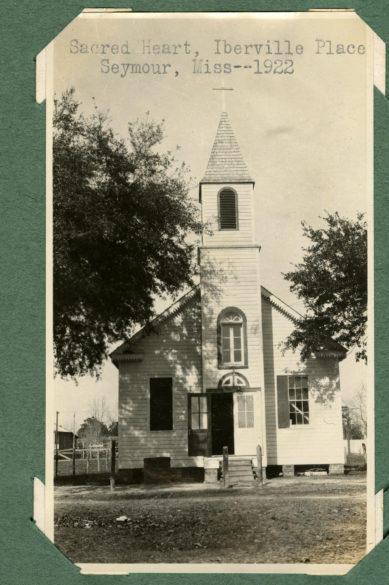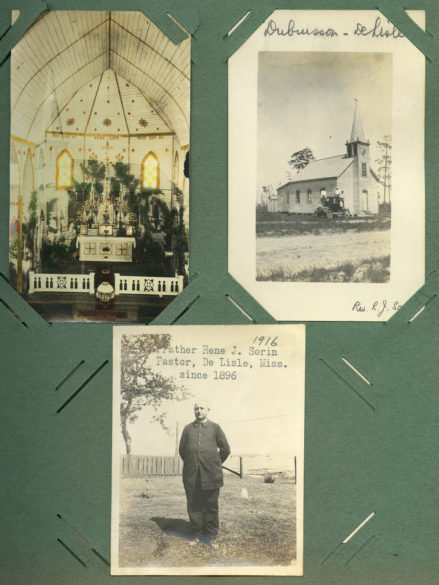From the Archives
By Mary Woodward
JACKSON – The month of September in Mississippi normally brings to mind football and a little bit of a cooler breeze coming through. September also is an active part of the hurricane season. We have started this September off with Ida and Nicholas. So far, we have been more fortunate than our Louisiana neighbors.
Archives and hurricanes are not generally talked about in the same sentences unless you are involved in archival work and are located in hurricane prone areas. Archivists throughout the Gulf Coast region have disaster preparedness and disaster recovery plans in place to help alleviate the damage wind and water can cause to artifacts and manuscripts.
In our diocesan archives, we often get requests from parishes in the Biloxi diocese for photos of their original churches. Many of those churches built in the early 1900s did not survive the years. Some were lost to fire and age, others to population shifts and neglect, but many were lost to hurricanes. These storms bring with them swells of water, triple digit winds and torrential rains.
Hurricane Camille came barreling ashore in 1969 and left a path of destruction not seen in modern times. Camille became the benchmark for destruction along the Gulf Coast until 16 years ago when Katrina removed most everything south of I-10 in the Biloxi diocese.
While the world focused on the terrible flooding in New Orleans caused by the backside of Katrina, the people of the Gulf Coast were trying to dig themselves out from under miles of debris. For the Diocese of Biloxi, which encompasses the 17 counties closest to the Gulf, nearly every church property sustained severe damage. Some were completely destroyed.
Imagine St. Clare Church in Waveland. When Katrina came ashore with a 30-foot swell of water, St. Clare’s front door stood at normal sea level, 100 feet from the water. Needless to say, there was nothing left but the front steps of the church and the slab of the school. St. Michael’s seashell roof in Biloxi looked fine from the air, but the main altar which weighed several tons was tossed off to the side and the pews were sucked out to sea.
After concerns about the safety of people, a Catholic diocesan archivist starts to think about sacramental registers, photographs and sacred vessels. Many of these items were lost.
Just recently Sacred Heart in d’Iberville called because they will be celebrating their 100th anniversary next year and were hoping we had some photos of the original church. Fortunately, we were able to provide them with a couple of photos. They had never seen what the original church looked like.
This week in a tribute to our neighbors on the Gulf Coast, we are sharing some images from Bishop John Gunn’s photo scrapbook. The photos or postcards range from 1915-1923 and give us a glimpse of churches during that time. Sacred Heart in d’Iberville (then Seymour) is among them.
As you look at them, offer a prayer to St. Medardus, patron of weather, to protect us all from storms. Amen.
(Mary Woodward is Chancellor and Archivist for the Diocese of Jackson)




